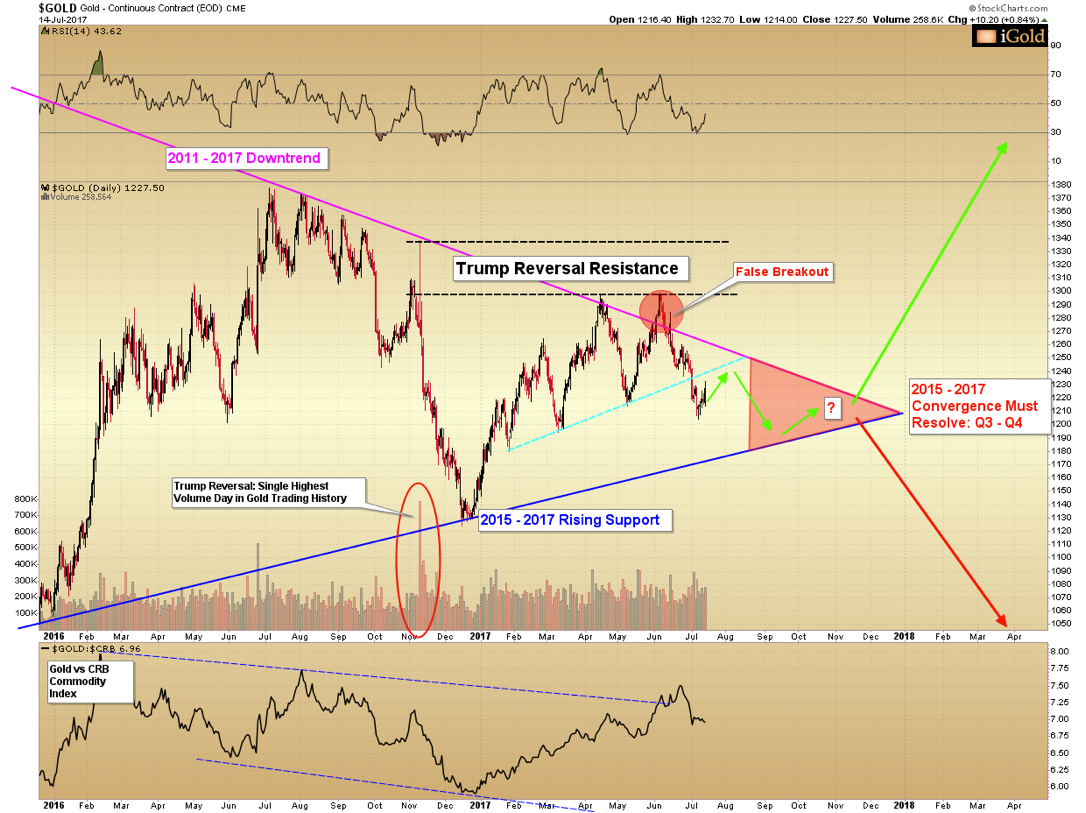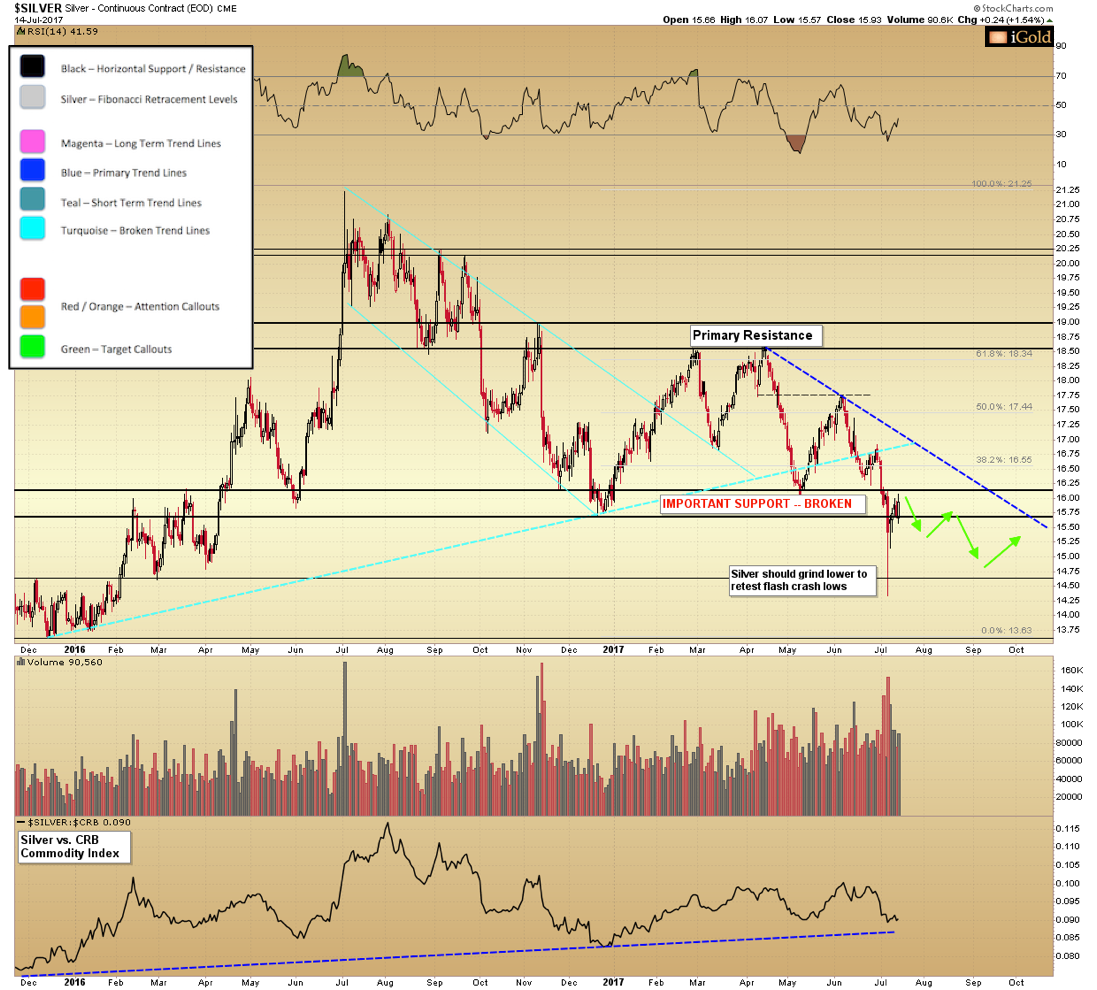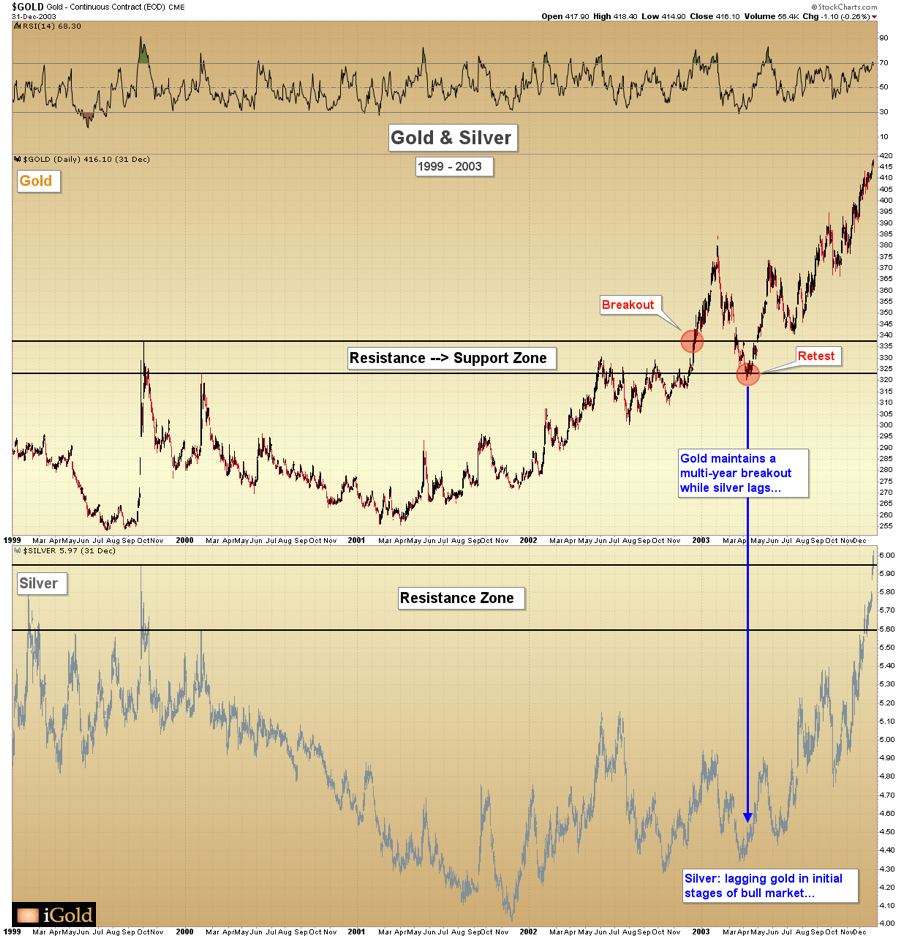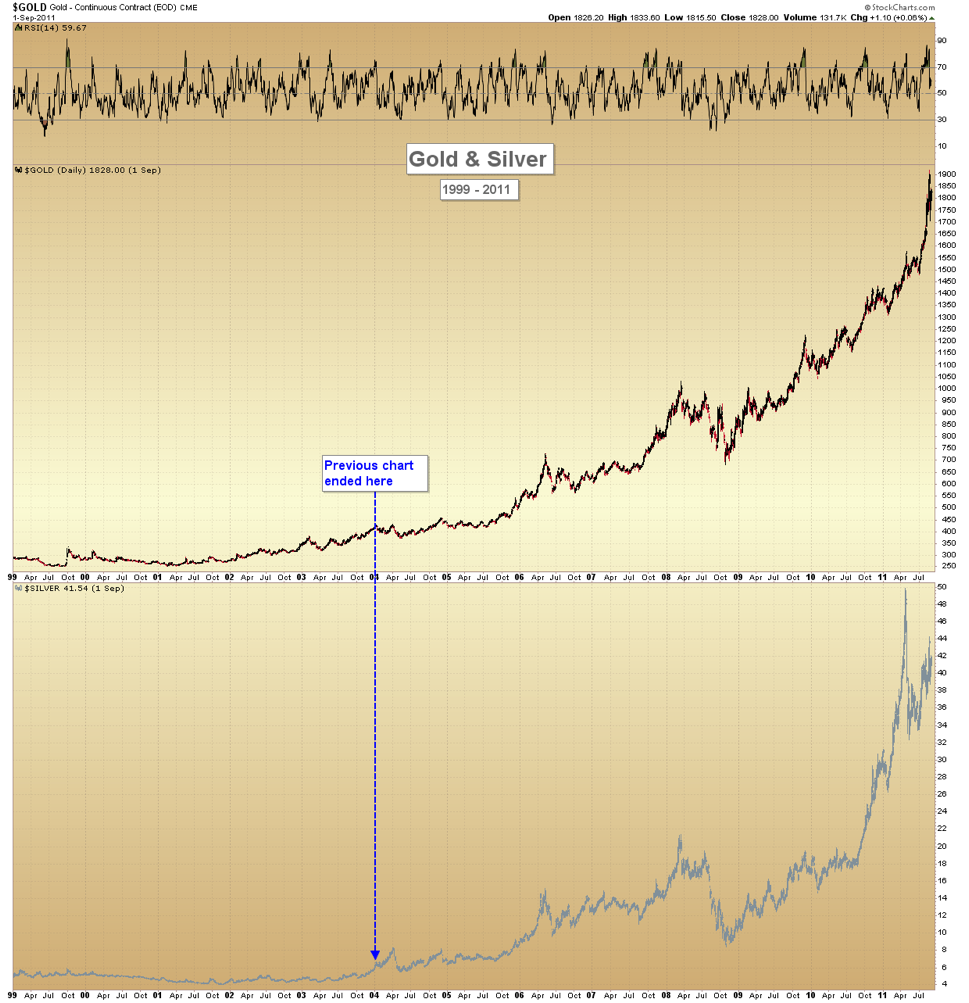Watch For Gold Price Leadership
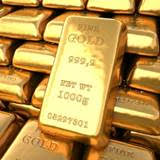 Two weeks ago gold broke its short-term rising trend at $1,235, a technical level which held gold higher since January. This is shown below by the broken turquoise trendline. While such a breakdown would normally be a sign for caution, because the breakdown has occurred within the terminal stages of golds ongoing 2-year consolidation, the failure takes lesser importance from a technical standpoint.
Two weeks ago gold broke its short-term rising trend at $1,235, a technical level which held gold higher since January. This is shown below by the broken turquoise trendline. While such a breakdown would normally be a sign for caution, because the breakdown has occurred within the terminal stages of golds ongoing 2-year consolidation, the failure takes lesser importance from a technical standpoint.
Gold remains in an inherently neutral consolidation, the resolution of which should see a major breakout above $1,400 or a breakdown to new lows below $1,045, depending on which direction the pattern resolves.
Volatility should lessen notably for the next 1-3 months as the consolidation nears its final phases, before a big breakout in one direction or the other occurs in Q3 – Q4.
Given this short-term outlook for gold which remains mixed, we should turn our primary focus to other components of the precious metals sector for clearer signals.
Silver Underperforms Gold
Silver prices have made a valiant effort to recover losses from last week’s “flash crash”, closing higher by $0.51 cents or 3.3%, to $15.93 as of the final trade on the New York COMEX last week.
However, the importance of the breakdown during the flash crash below the $15.75 - $16.15 support region, labeled Important Support above in red, should not be overlooked.
This support region held on no less than four occasions over 14 months, dating back to May 2016.
Manipulation or not, sufficient long-term bids were not present in silver on the night of the flash crash to maintain this support region. This constitutes a failure of a clear horizontal technical level. On a failure of a 1+ year support, retests of the region should be expected to also fail.
Thus far, the recovery in silver constitutes nothing more than a retest of that broken support zone between $15.75 - $16.15.
False Breakdown In Silver?
It would take a weekly close above $16.15 to suggest that the entire flash crash has constituted a false-breakdown below this important support region. This would indicate an imminent reversal higher. Confirmation of such would come if silver were to close above the declining (blue) primary trendline, now at $17.00 precisely. In this scenario, we would be aggressive buyers of silver and silver miners again, as we would interpret the entire flash crash as a final washout of the ongoing 12-month correction since the July 2016 peak at $21.25.
However, as of yet, we cannot interpret silver’s price action as anything other than a retest of its broken support zone.
We expect support-turned-resistance below $16.15 should continue to hold back prices, and we will look for silver to grind lower toward a retest of its flash crash lows, near $14.20, over the next 1-3 months.
Gold Relative Leadership – Signs Of An Early Market
If gold prices were to maintain above the lower boundary of its ongoing pennant consolidation (which now comes in at $1,175, see gold chart above) even while silver grinds to retest the vicinity of its flash crash lows near $14.20, a major buying opportunity will be setting up on this signal in late Q3 or Q4. Such would indicate gold leadership amidst the first major retracement since 2016 highs – and in general, throughout history when viewing the relationship between the two metals, gold leadership at an early stage is indicative that a major advance in the complex is merely in the early phases.
For example, let us view the relative performance of gold versus silver at the beginning of the bull market which lasted from 2001 – 2011:
Note how gold broke out above its $320 - $340 resistance zone in December 2002, only to retest this level successfully in April 2003, before advancing to new highs by mid-2003 into the $400’s.
In comparison, silver lagged gold during the first several years of the precious metals advance. Whereas gold had strongly broken above its 1999 – 2002 resistance zone in December 2002, silver lagged significantly below its relative high of $5.95 per ounce even until late 2003.
What more, even as gold retested its breakout level in April 2003, silver still lagged, with prices closer to all-time lows near $4.30 per ounce (blue arrow).
Truly, gold led the metals out of the 2001 bottoms, and silver lagged across every timeframe.
Yet importantly, what followed the initial leadership signal in gold was eight more years of rising prices, through the peaks in 2011:
The point is: those who dismissed the precious metals market in 2003 simply because silver lagged during the initial phases of the metals’ advance failed to realize that this is normal behavior for the early portion of a new advance. We are seeing potential for this same set of signals presently, should gold hold within its consolidation during Q3 even as silver has already violated support.
Back To The Present
The implications for a gold leadership signal setting up within the next 2-3 months would be significant for everything related to the precious metals. However, we will let the market show us the validity of this scenario. It will not be too late to act when we see either a confirmation or negation of this thesis. Yet we must retain patience, because if gold breaks its lower boundary to the downside, the probability of a new low below $1,045 for gold and $13.65 for silver will be the primary focus into 2018.
********

